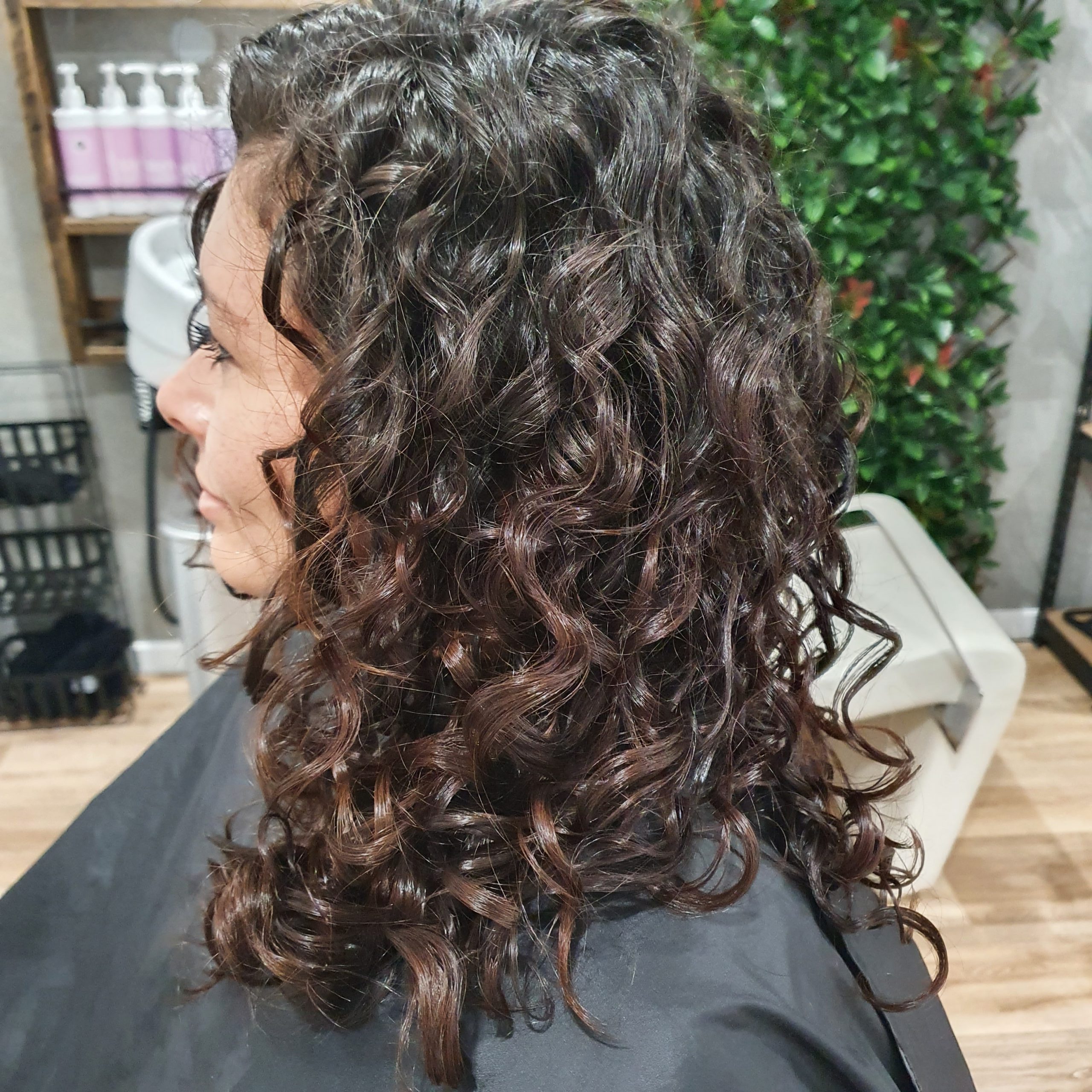Table Of Content

This can cause your hair cuticles to become raised and open, which may make it harder for your hair to retain moisture. "High porosity hair usually needs more protein or oil to help seal in moisture. Some conditioners have more protein in them, so look for conditioners with keratin, wheat, or silk protein for added strength," she explains. Stevens suggests using an egg, which is packed with proteins, to help strengthen weakened strands. Cleansing, on the other hand, isn't based on any porosity but how much build up in on the hair.
What Is Hair Porosity? - POPSUGAR
What Is Hair Porosity?.
Posted: Mon, 21 Oct 2019 07:00:00 GMT [source]
Can you change your hair porosity?
“Remember that all hair is already dead, so it’s important to nourish it as much as possible, especially if you’re doing damaging treatments that can lead to high hair porosity,” Dr. Kahen says. This shampoo specifically targets damage so that users observe a significant improvement in their hair after each wash. Highly moisturizing yet cleansing, it’s suitable for all hair types and textures and is color safe to boot. Customers love the formula for how soft it leaves hair feeling, with one reviewer calling it the best shampoo she’s used in her life. The formula also eschews harsh cleansing ingredients like sulfates, opting instead for mild surfactants that thoroughly cleanse the scalp and strands of buildup, sweat, and pollutants without stripping hair of its natural oils.
Suds up with the right shampoo
High-porosity hair differs from other hair types in that it quickly absorbs and loses moisture due to a raised or open cuticle layer. This stands in contrast to low-porosity hair, which has a tightly closed cuticle layer that makes it more resistant to moisture absorption. Medium-porosity hair falls somewhere in between, with a moderately receptive cuticle layer. High-porosity hair can be a bit of a diva—it does a great job of soaking in moisture that’s applied to the hair, but then loses that moisture too quickly. “The cuticle, or outermost layer of the hair, has what would best be described as scales coating it,” explains Paul Cucinello, a celebrity stylist, beauty expert, and founder of Cucinello Beauty.

Cut Down on Styling
Its clean formula is packed with natural ingredients, too, such as coconut oil, moringa leaf extract, and false daisy extract, each of which support healthy hair and a balanced scalp. Consistent use of moisturizing hair-care products tailored to high-porosity hair types is key. Our experts also recommend regularly incorporating deep-conditioning treatments or hair masks into your routine. “These treatments should be applied weekly to replenish moisture and restore the hair's elasticity and vitality,” says Powell.
Unlike low porosity hair, which has an extremely flat cuticle layer, making strands less likely to absorb water and products, high porosity hair has a more open cuticle layer. However, it's harder for high-porosity hair to retain moisture due to the cuticles' openness. To learn more about how to care for high porosity hair, we turned to top dermatologist Joyce Park, MD, as well as hair specialists Alicia Bailey of Design Essentials and Leigh Hardges of Maxine Salon. This conditioner (and its corresponding shampoo) is made with high porosity hair in mind, specifically targeting concerns like breakage, split ends, frizz, and damage from heat tools and hair color. It promises to smooth out dreaded frizz in even the most humid locales, and to improve elasticity so you can find less hair in your comb after each brush.
DIY Jo Nourishing the low porosity hair Flair - Jamaica Gleaner
DIY Jo Nourishing the low porosity hair Flair.
Posted: Thu, 20 Apr 2017 07:00:00 GMT [source]
What Type of Hair Porosity Do You Have?
Protective styling involves braiding your hair, wearing wigs or adding hair extensions to your hair. Anything that reduces constant manipulation of your hair is basically protective styling. Natural hair clip-ins, for example, help you to have fuller, longer hair without much manipulation. Deep conditioning treatments are especially helpful for adding moisture, nourishment, and softness to highly porous hair. High porosity hair can be genetic, which means that it runs in your family. Many times, though, it’s caused by hair processing and styling treatments like straightening, blow-drying, bleaching, and other chemical applications.
Products with those types of chemicals are a big NO NO as they pull essential moisture from your hair. The most popular way to confirm if you have high porosity hair is to do a strand test on clean hair. All you have to do is take a strand of your hair and drop it in a glass of water. If your hair sinks very quickly to the bottom, you have high porosity hair.
How to Take Care of High Porosity Hair
As high porosity hair is fragile and subject to breakage, incorporating protein will help to fortify it. Processing your hair or styling your hair like straightening, blow-drying, bleaching or using other chemical applications can all lead to high porosity hair. Individuals with high-porosity hair encounter several challenges when striving to maintain hair health.
How High-Porosity Hair Responds to Hair-Care Products
Heat damage and other chemical processes can cause normal porosity hair to change over time. Sorry to be the bearer of bad news, but that high ponytail may not be worth it. “For hairstyles, try to avoid ones that cause further damage or breakage like tighter hairstyles that can pull at the hair,” Dr. Kahen says. It’s also best avoid excessive heat styling and go easy when brushing your hair. Use a wide tooth detangling comb or a gentle brush to prevent breakage. “It is best to avoid sulfates when possible as these can be drying,” Dr. Garshick says, so opt for a sulfate-free shampoo at the very least.
He recommends plant-based oils like coconut and sea buckthorn oil, which are hydrating to the hair, as well as moisturizing ingredients like shea butter and manuka honey. Dr. Garshick suggests Andalou Naturals Argan Oil Conditioner, as it contains a blend of argan oil and avocado oil, as well as shea butter and vitamin E to both moisturize and condition the scalp. If you have highly porous hair, you can expect lots of frizz, especially during humid weather, dullness and tangles. Your hair will also likely be prone to breakage and damage, and may look and feel dry. There are multiple factors that can cause high-porosity hair—the biggest one being genetics.
These cuticles protect the inner layers of your hair by controlling how much moisture, as well as products and chemicals, can be absorbed. Hair with “normal” levels of porosity will absorb 75% of the maximum water possible within four minutes. People with normal porosity hair usually have an easy time getting their hair to hold bleach, hair dye, or relaxer, and the results tend to be predictable. After a few minutes of allowing the hair to rest in the water, take a look. And if the strand is somewhere in the middle of the water, you have medium to normal porosity hair. "High porosity hair has many gaps in the hair shaft because the cuticles are raised. Adding protein will reduce breakage, make your hair thicker and improve the elasticity of your hair."
“These products are intentionally formulated to be acidic in order to preserve color or make your hair feel smoother by lowering the pH,” he explains. Black hair requires a lot of moisture when it's healthy, so when it's high porosity, it needs it even more. The goal here is to manage your damaged tresses while promoting healthy new growth that doesn't become high porosity. Bailey recommends using the Design Essentials Almond & Avocado Wash Day Deep Moisture Masque ($16). To help nourish, moisturize, and repair highly porous hair, you may have to use certain hair care products that include “heavier” ingredients like oils or butters.

Additionally, be sure to steer clear of products that are clarifying or high alcohol content sprays, since these also zap moisture. "Spritz a section of clean, dry hair with water," Park says, "If the water beads up and takes a while to be absorbed, your hair may have low porosity. If it quickly soaks in, it suggests high porosity." Here are some examples of conditioners that may be especially helpful for highly porous hair. These types of treatments can damage your cuticles, causing them to lift or separate. This can create gaps between your cuticles and, as a result, your hair may be more porous than it would normally be. If you’re unsure which type of hair you have, there are a few experiments you can try at home to get a general idea of whether you have low, average, or high porosity hair.

No comments:
Post a Comment